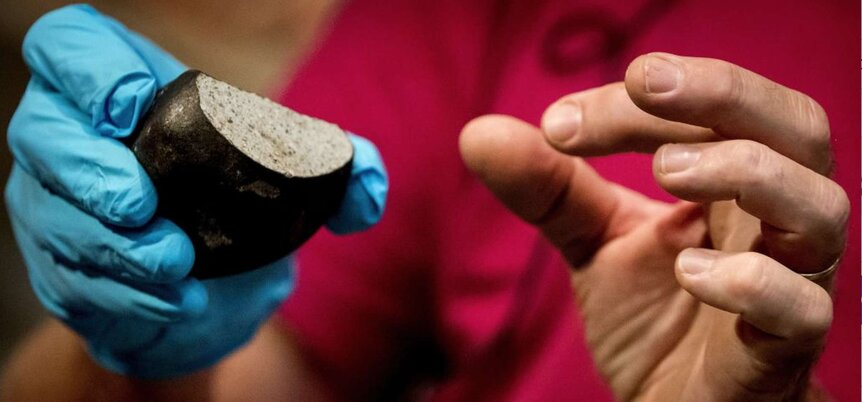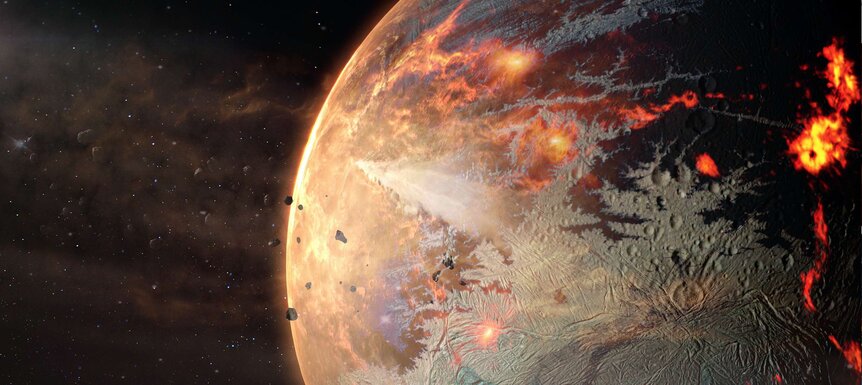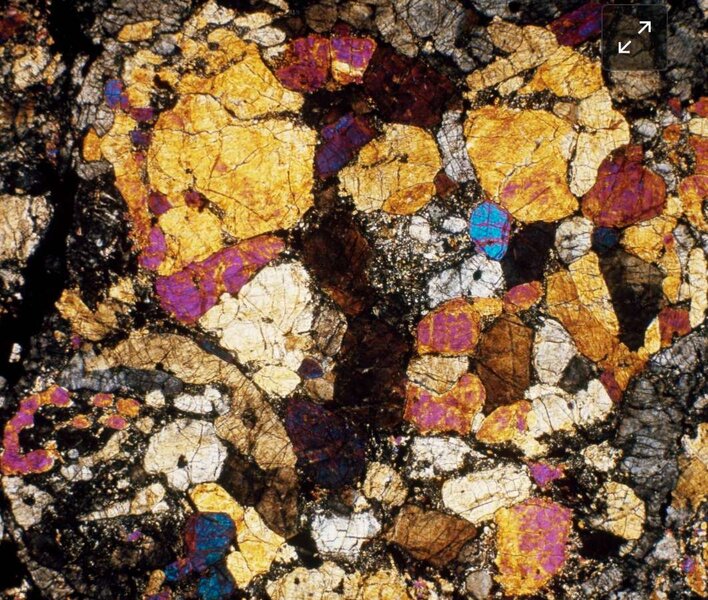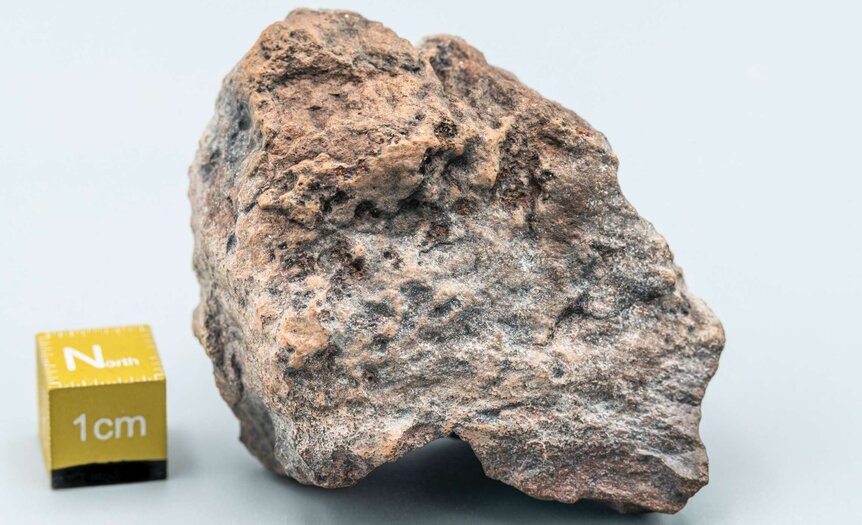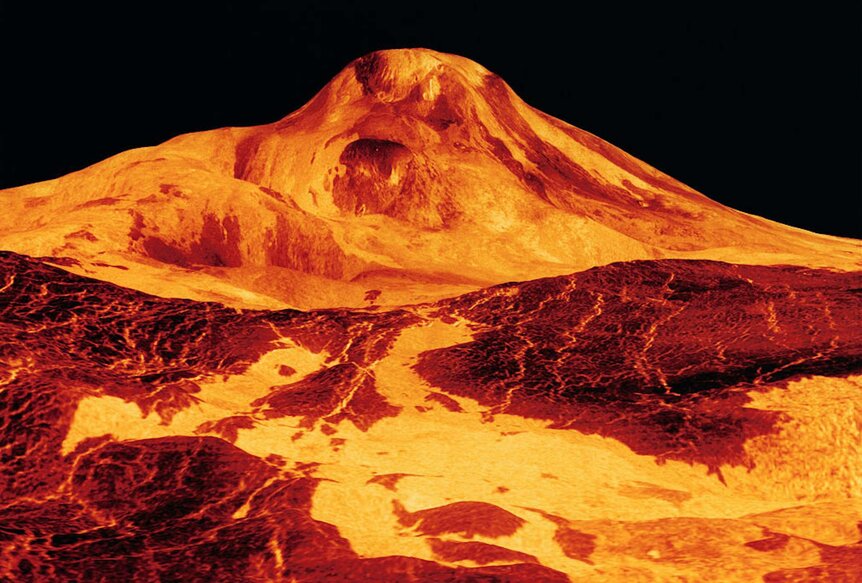Create a free profile to get unlimited access to exclusive videos, sweepstakes, and more!
Molten Mustafar-like planets might have created pesky cosmic meteorites
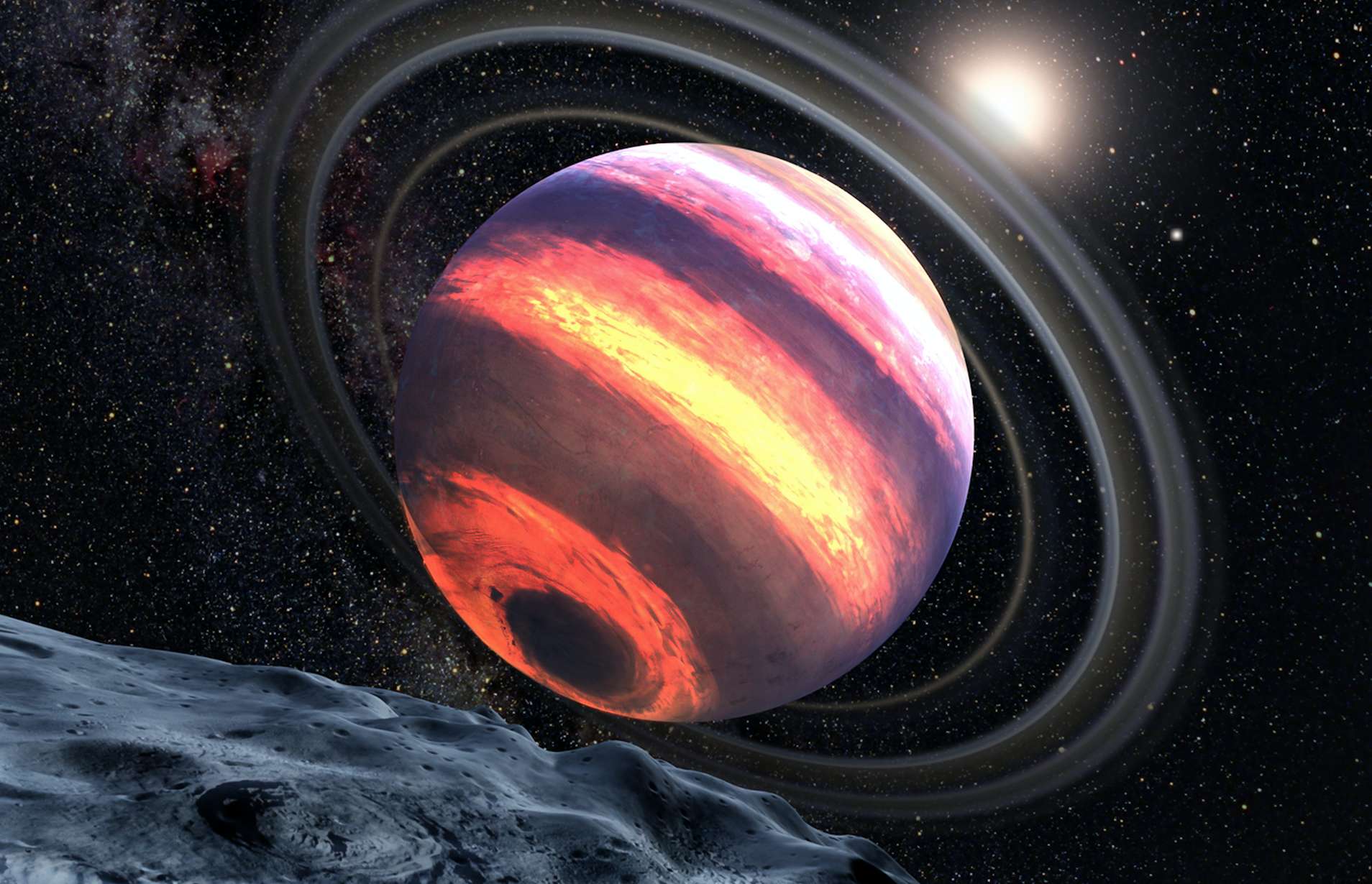
As summer temperatures start climbing into the triple digits, it's hard to wrap one's mind around some of the scorching forces at work in our universe that form many fantastic phenomena observed throughout the cosmos.
One such common occurrence is the hail of outer space meteorites that falls upon Earth, and postulations of how elemental heat during the early days of the heavens might have helped cause these alien rocks to produce small strange spheres inside their bumpy metallic shells.
In answer to those questions, a research paper presented at this month's American Astronomical Society meeting courtesy of William Herbst and James Greenwood of Wesleyan University in Connecticut theorizes that the tiny bubbles discovered in many meteorites were formed by ancient lava protoplanets melting, then flash-freezing, chondrule particles that comprise their makeup as they streaked past eons ago.
Astronomers and geologists have long puzzled over the origins of these circular chondrules, seen anytime this dense space debris drops onto our Big Blue Marble and undergoes inspection and analysis.
Also known as chrondrites due to their ubiquitous presence in sliced-open samples, they are involved in 86 percent of all meteorites ever found on Earth. This new hot-topic theory gives us a credible answer to how these minuscule spheres were created, and what infernal forge was responsible for their existence.
According to their research and laboratory furnace experiments, smoking protoplanets drenched in oceans of lava similar to Star Wars' Mustafar and Star Trek's Excalbia could have roasted flyby asteroids with incalculable temperatures nearing 3,000 degrees Fahrenheit, initially blowtorching, then rapidly cooling, the aforementioned bubbles as they exited the range of the planet's hot breath.
Happening in a very brief radiative heating event during the chondrule formation epoch, small planetesimals (protoplanets) and asteroids encountered the thin crusts of large planetesimals where volcanism or crustal fracturing released hot magma to their surfaces. If this new hypothesis rings true, chondrules discovered in meteorites are a window into the formation of our solar system and its violent birth pangs some 4.6 billion years ago.
"Chondrule formation is just a really thorny problem," University of Manchester's Rhian Jones explained to the New York Times. "So anytime somebody comes up with something completely different it’s very welcome, because we don’t have the answer."
Meteorites are not like Earth's complement of rocks and are much older, offering ancient samples of other planetoids, asteroids, moons, and possibly comets from our planetary neighborhood. Geologists and astronomers utilize data extracted from meteorites pelting the planet to learn more about the early evolution of our solar system billions of years ago.
The notion of bubbling meteors zooming past violent lava worlds before planets were fully formed indicates that chondrules should be exceedingly rare, but the physical evidence points to a different conclusion due to the prevalence of these round chondrites in Earth's intruding space rocks.
"The meteorite record is a record of those materials that have the tensile strength to survive to the surface of Earth," said Dr. Herbst. "So what fraction of the primitive material out there has that tensile strength? Our model makes a prediction. It’ll be small."
